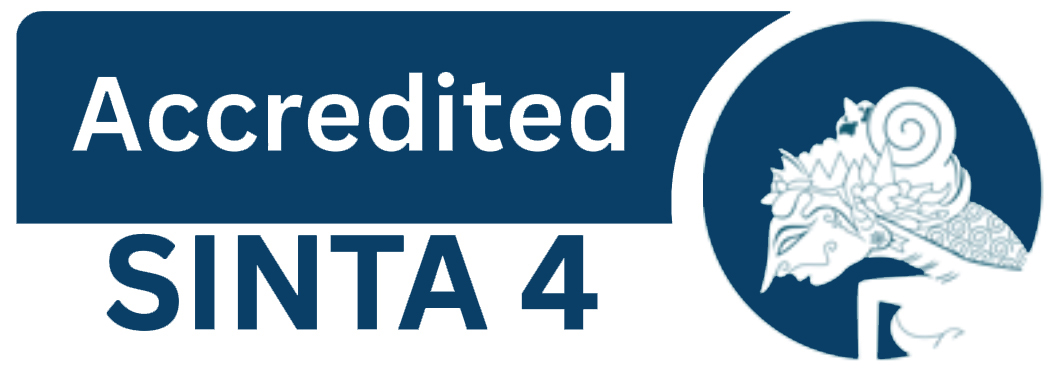PENERAPAN METODE AWARENESS DALAM MENINGKATKAN MINAT BACA MASYARAKAT UNTUK MENDUKUNG LAYANAN PROGRAM TAMAN BACAAN MASYARAKAT (TBM)
DOI:
https://doi.org/10.22460/p2m.v9i2.3179Keywords:
Awareness method, reading interest, Taman Baca Masyarakat programAbstract
The focus of this research problem is related to the reading interest of the community around Taman Baca Masyarakat Cahaya Karawang Regency. There are two factors that can affect reading interest, including internal factors and external factors. Internal factors include people who tend to be lazy to read, then busy activities, while external factors include the lack of adequate facilities or infrastructure, then the influence of the environment and the tendency of people to be more interested in multimedia. The purpose of the research includes to obtain an overview of the empirical condition of reading interest, knowing the steps of implementing awareness methods, as well as the advantages and disadvantages of applying awareness methods. Qualitative approaches with descriptive methods are applied in this study. Data collection techniques applied in research include interviews, observations, library studies, and documentation studies. The expected results, 1) Obtaining data on the empirical condition of people's reading interest, 2) Obtaining accurate data on the overview of measures to implement awareness methods to increase people's reading interest, 3) Obtaining data on the advantages and disadvantages of implementing awareness methods.References
Aderinoye, R. (2008). Literacy And Communication Technologies : Distance Education Strategies For Literacy Delivery Rashid Aderinoye Inclusive education and the role of the new media The themes of open and distance learning , information and communication technologies ( ICTs ), 605–626. https://doi.org/10.1007/s11159-008-9100-5
Ambler, K., Jones, K., & Sullivan, MO (2021). Facilitating women ' s access to an economic empowerment initiative : Evidence from Uganda q. World Development, 138, 105224. https://doi.org/10.1016/j.worlddev.2020.105224
Azmi, M., Sani, A., & Suwanto, SA (2018). Pembinaan Minat Baca Masyarakat Melalui Pembangunan Taman Bacaan Masyarakat Desa Kemasan Klepu , Semarang , Jawa Tengah, 2(2), 165–176.
Chu, PH. and Chang, Y. (2017). John W, Creswell, Research Design: Qualitative, Quantitative, and Mixed Methods Approaches. Journal of Social and Administrative Sciences.
Edi Suharto. (2005). Membangun Masyarakat Memberdayakan masyarakat. Bandung: Refika Aditama.
Fraenkel, JR, & Wallen, NE (2016). How To Design And Evaluate Research In Education (6th ed). New Yorks.
Han, TM, Gandenberger, J., Flynn, E., Sharma, J., & Morris, KN (2020). Empowerment theory and prison-based dog training programs. Journal of Social Work. https://doi.org/10.1177/1468017320954350
Hidi, S. (2001). Interest , Reading , and Learning : Theoretical and Practical Considerations, 13(3), 191–209.
Khairuddin, Z. (2013). A Study of Students' Reading Interests in a Second Language. International Education Studies, 6(11), 160–170. https://doi.org/10.5539/ies.v6n11p160
Krupar, A., Horvatek, R., & Byun, S. (2017). Does Nonformal Education Matter ? Nonformal Education , Immigration , and Skills in Canada. https://doi.org/10.1177/0741713617697423
Madjar, N., & Cohen-Malayev, M. (2013). Youth movements as educational settings promoting personal development: Comparing motivation and identity formation in formal and non-formal education contexts. International Journal of Educational Research, 62, 162–174. https://doi.org/10.1016/j.ijer.2013.09.002
Maulidiyah. (2005). Pengaruh Peer Grup terhadap Kemandirian Siswa Dasar Kelas IV di MIN 2 Malang. Jurnal Penelitian dan Evaluasi Pendidikan, 1, 92.
Moayedi, AA, & Azizi, M. (2011). Non formal education and its relationship with bread wheat production. Procedia - Social and Behavioral Sciences, 15, 1732–1736. https://doi.org/10.1016/j.sbspro.2011.03.360
Naidoo, J. (2015). Pedagogic strategies: Using empowerment theory to confront issues of language and race within mathematics education. Power and Education, 7(2), 224–238. https://doi.org/10.1177/1757743815586522
Pezoa, JP, Mendive, S., & Strasser, K. (2019). Reading interest and family literacy practices from prekindergarten to kindergarten: Contributions from a cross-lagged analysis. Early Childhood Research Quarterly, 47, 284–295. https://doi.org/10.1016/j.ecresq.2018.12.014
Review, J., Dasar, P., Pendidikan, JK, Penelitian, H., & Membaca, A. (2017). MINAT BACA ANAK-ANAK DI KAMPOENG BACA KABUPATEN JEMBER Pendidikan Dasar Pascasarjana Universitas Negeri Surabaya, 3(1), 320–328.
Shin, H., Perdue, RR, & Pandelaere, M. (2020). Managing Customer Reviews for Value Co-creation: An Empowerment Theory Perspective. Journal of Travel Research, 59(5), 792–810. https://doi.org/10.1177/0047287519867138
Sichula, NK, & Genis, G. (2019). Pedagogical practices in non-formal adult literacy classes in Zambia. International Review of Education, 65(6), 879–903. https://doi.org/10.1007/s11159-019-09808-y
Stranger-Johannessen, E. (2014). Promoting a reading culture through a rural community library in Uganda. IFLA Journal, 40(2), 92–101. https://doi.org/10.1177/0340035214529732
Strauss, A., & Corbin, J. (1990). Basis of Qualitative Research: Grounded Theory Procedure and Techniques. London: Publikasi Sage.
Sudjana, D. (2004). Penilaian Hasi Proses Belajar Mengajar. (PR Rosdakarya, Ed.). Bandung.
Varanda Marques, JB, & de Freitas, D. (2016). Mapping the future of non-formal education and the scientific dissemination of astronomy in Brazil: A delphi study. Policy Futures in Education, 14(8), 1153–1181. https://doi.org/10.1177/1478210316674158
Walgermo, BR, Frijters, JC, & Solheim, OJ (2018). Literacy interest and reader self-concept when formal reading instruction begins. Early Childhood Research Quarterly, 44, 90–100. https://doi.org/10.1016/j.ecresq.2018.03.002


















